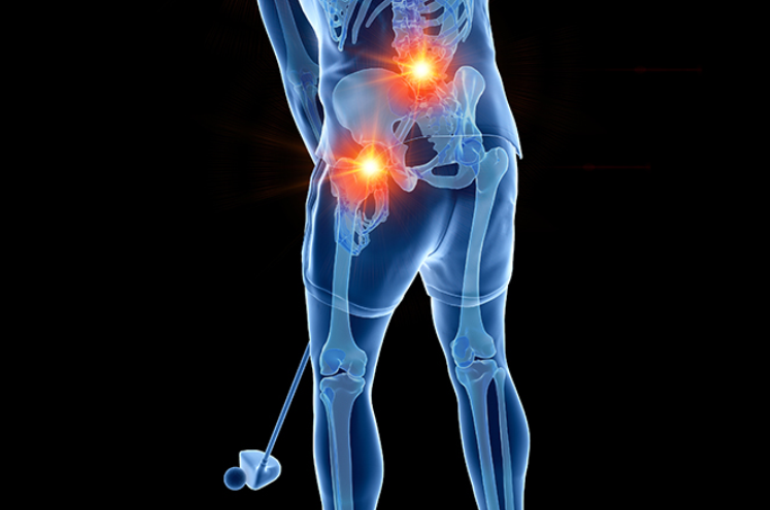Drive Out Golf Injuries

While golf is a relatively low-impact sport, injuries can still occur. In particular, knee and other joint pain, shoulder pain, and back stiffness, can rear their ugly heads. Although this season is well underway, it's always important to learn how to protect that PGA-worthy swing.
One of the most important factors to avoid a golf injury is good technique. With the right form, your body should flow smoothly through the swing, preventing strain on any one muscle group or joint. If you can, take the opportunity to have your swing analyzed by a professional; from there you can see where new injuries may develop or where existing ones may have originated. Aerobic exercises and light stretching prior to tee time is certainly a good idea. Warming up your muscles is essential in protecting them from sports-related injuries. If you need some pre-putting exercise ideas. Try these:
Glute bridges: Start by laying flat on your back. Bend your legs so that your feet are flat on the floor. Cross your arms in an "X" across your chest so that each palm is on the opposite shoulder. From there lift your hips off the ground and hold for five seconds. Repeat 10 times.
Russian twists: Sit on the ground with your legs straight out in front of you. Slightly lean your upper body back keeping your hands off the ground. Slowly pick your legs up off the ground, bending your knees for balance. Alternate twisting your upper body from side-to-side so that your chest faces the left then the right, but your legs stay where they are. Repeat 20 times (10 each side).
Forearm rotations: Hold a lightweight dumbbell in one hand out straight in front of you, palm facing down. Slowly rotate the dumbbell so that your palm then faces up. Repeat 10 times, then switch arms.
During the offseason, make sure to build strength in those key muscle groups mentioned so that your body is good to go with your first drive of the season. Light training in the winter and spring months will strengthen your body for what's to come, helping defend against strains, sprains and tears.
If, however, you do end up with an injury, be sure to nurse it properly with plenty of ice, compression and rest. If symptoms persist, check with your doctor as soon as possible to avoid further, more permanent damage.
As always, enjoy doing what you love, and with these tips, your golfing season is sure to be a hole-in-one!
Related: Can I Golf After Joint Replacement
Our Golf Fitness Program at UMass Memorial - Marlborough Hospital helps golfers improve their biomechanics and avoid injuries.

